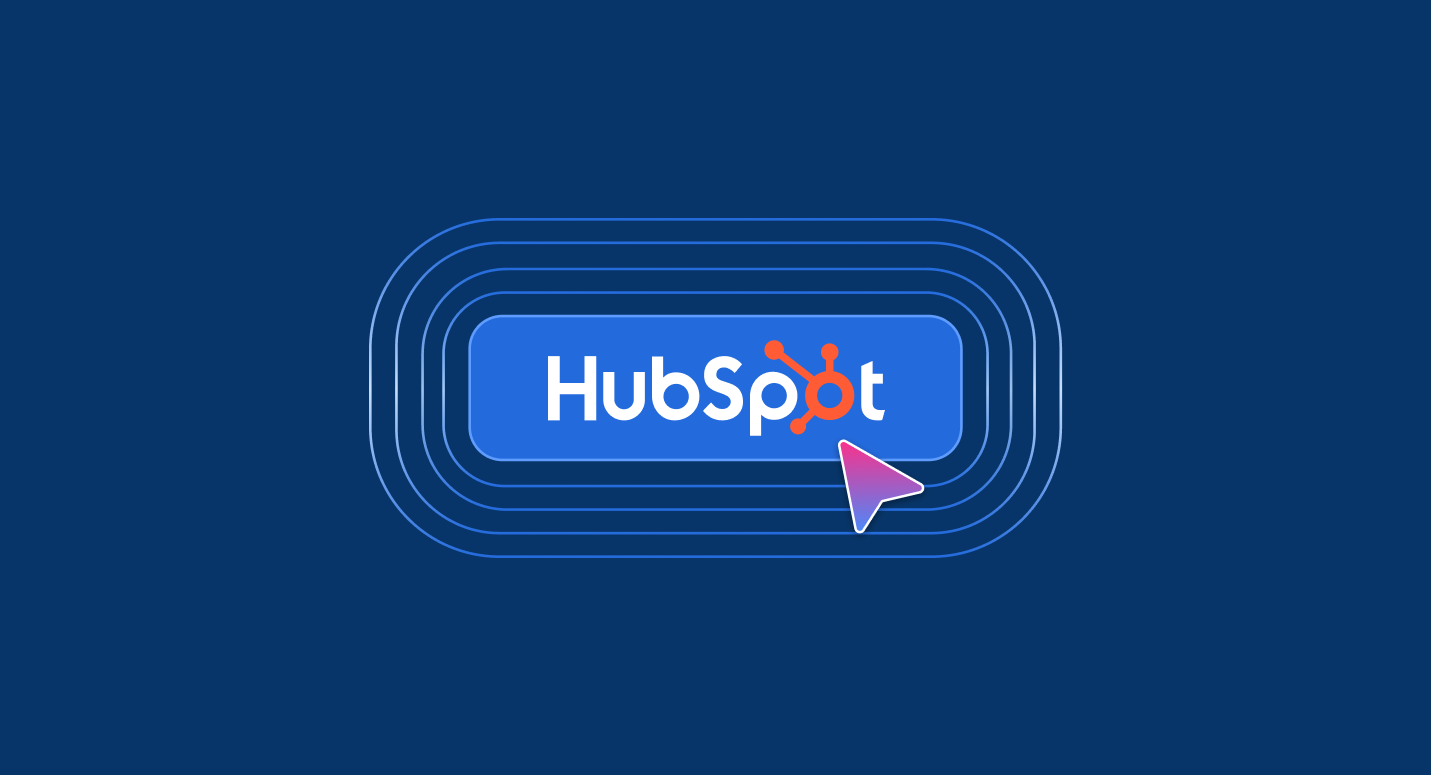Outbound vs Inbound Call Centers: What’s the Difference?
Outbound call centers have one purpose: to initiate contact with customers. Outbound agents call customers or prospects, whether for sales, booking meetings, conducting surveys, or providing product information and updates.
While they mainly focus on lead generation, they also build brand awareness, conduct market research and nurture current customers to improve retention.
Inbound call centers, on the other hand, handle incoming calls and are mostly used for customer support. Inbound agents solve problems for customers and work on improving response time and customer satisfaction, among other things.
So what exactly are the functions and purpose of an outbound call center? Let’s have a look.
Takeaways
- Outbound call centers proactively initiate contact with customers for sales, lead generation, surveys, and brand promotion, unlike inbound centers that handle incoming support queries.
- Common outbound center types include telesales, telemarketing, and market research, each serving distinct business objectives.
- Benefits include direct customer engagement, lead generation, brand promotion, cost-effectiveness, data collection, and actionable customer feedback.
- Industries leveraging outbound centers include healthcare, telecommunications, financial services, retail, real estate, travel & hospitality, and education.
- Key challenges involve call abandonment, compliance with regulations (TCPA, GDPR), negative perceptions, staff turnover, poor data quality, ineffective scripts, and technology integration issues.
- Essential technology includes predictive dialers, IVR with TTS, call recording, speech analytics, workflow automation, and reporting dashboards to optimize efficiency and performance.
- Best practices emphasize agent training and development, effective call scripts, compliance and ethics, performance monitoring, quality assurance, continuous improvement, and a customer-centric approach.
- Future trends in outbound centers include AI integration (chatbots, predictive analytics), omnichannel communication, voice recognition, NLP, enhanced data security, and strategies to combat spam and call blocking.
- Outbound call centers, especially with AI-driven tools, enhance sales, customer engagement, and operational efficiency while enabling personalized outreach at scale.
Examples of Outbound Call Centers
Outbound call centers come in all shapes and sizes. Let’s talk about the most common ones.
Telesales
Telesales involves agents calling potential or existing customers to sell a product or service. Agents aim to close sales over the phone or cross-sell and upsell to existing customers. They often leverage customer insights, such as social media interactions or online queries, to reach out to ‘warm leads’ who have previously shown interest.
Telemarketing
Telemarketing agents focus more on generating interest and leads for the sales team. Telemarketing centers aim to build interest and brand awareness to drive lead generation. Agents focus on booking meetings and demos that inform customers about the product, building a more nurturing relationship.
Market Research
Gathering information about customer preferences, opinions or feedback is the main goal of market research call centers. Collecting valuable customer data helps companies understand current market needs. Market research centers leverage surveys of previous customer experiences to enable quick product improvements and strategy shifts depending on the perception of their brand in the market.
Benefits of Using an Outbound Call Center
Direct Customer Interaction
Outbound call centers enable strong customer relationships with personalized engagement, fostering an environment of trust and loyalty. Their true value shines when dealing with complex scenarios where the individual approach is essential. Plus, they’re invaluable assets to any sales organization where large volumes of prospects need to be contacted.
Lead Generation and Brand Promotion
Outbound agents’ primary focus is reaching out to potential customers and making a pitch for their product. This active prospecting and lead nurturing boosts sales pipelines and revenue generation. Plus, well-trained agents have the advantage of positioning the brand positively: they can highlight the key benefits and value propositions that future customers might not know about.
Cost-Effective
Outbound call centers are more cost-effective compared to field sales or promotional events. They can reach a larger pool of prospects in a shorter time with technologies such as auto dialers, ultimately reducing the cost per lead. And they’re budget-friendly – remote agents are significantly cheaper than those in physical offices.
Data Collection
Customer behaviors, preferences and feedback can all be easily collected from outbound calls and used to shape future marketing strategies, product development and service improvements. Companies can make more data-driven decisions and align better with their customers’ needs.
Customer Feedback
Outbound call centers have the added bonus of capitalizing on the customer’s feedback. They can understand exactly how people experience their product or service by speaking directly to the end-user.
Common Industries Using Outbound Call Centers
Call centers vary from one industry to the next and each one leverages them in unique ways. Let’s take a look at how they differ:
- Healthcare: Outbound call centers in healthcare mainly focus on patient outreach for appointment reminders, post-discharge follow-ups, and medication support.
- Telecommunications: Promoting new plans, upselling and customer retention are the main goals of outbound telecom centers. Agents offer upgrades and promotions to customers, which reduces churn and maximizes customer value.
- Financial Services: Financial institutions such as banks and insurance companies use outbound call centers for lead generation, sales and retention strategies. They also inform existing customers about new products and services like loans and credit cards.
- Retail: Retail call centers promote sales and offer loyalty programs with outbound campaigns. They can boost sales by spreading the word about discounts and new products. Plus, they remind customers about abandoned carts and offer discounts to encourage them to complete their purchases.
- Real Estate: Agents can contact prospective buyers or renters and remind them about appointments, give extra listing details, inform them about upcoming properties and follow up on leads generated from online platforms.
- Travel & Hospitality: Promotions, vacation packages, loyalty programs and upgrades are easily communicated to travel customers through outbound centers. Agents can encourage repeat bookings, push limited-time offers and gather valuable feedback on the guest’s experience.
- Education: Educational institutions use outbound calling to engage prospective students and promote new courses. They can also reach out to past students for donations or to invite them to events.
Challenges of Outbound Call Centers
Call Abandonment Rates
If agents are too slow to connect, customers may get frustrated and hang up before the call connects. Inefficient dialing systems or high volumes of calls are often the cause, coupled with low staffing. High abandonment rates mean less customer interactions, which inevitably leads to lost opportunities.
Compliance Issues
Outbound call centers are bound by strict regulations, such as the TCPA in the US and GDPR in the EU. Companies must ensure that they’re managing consent correctly, have opt-out options, and keep their agents following scripts that meet regulatory standards. Having a strong compliance monitoring system to reduce risk is equally as important.
Negative Perceptions
Outbound centers historically have a bad reputation for scam calls. In 2022, people over 60 lost over $724 million to tech support and government impersonation scams that originated from call centers. The stigma around outbound calling makes it difficult to build trust with customers. To improve public perception of outbound calling, agents need to be skilled enough to keep their conversations relevant and valuable.
Staff Turnover
Outbound call centers are notoriously fast-past, high stress environments with average turnover rates of 30-45%. Agents are constantly faced with frequent rejections, repetitive work and negative interactions. Recruitment and training is costly and time-consuming; meaning agents need supportive environments with incentives, promotions and growth opportunities to reduce burnout.
Handling Rejections
Resilience and objection handling training can help to prevent fatigue and poor productivity. Companies should be providing their agents with the right tools and training materials to cope with frequent rejection.
Poor Performance Metrics & Data Quality
According to Forbes, a quarter of companies with over 500 employees lose at least one customer a month because of bad data. Unreliable metrics make it difficult to accurately assess agent performance and campaign success, resulting in wasted time and low productivity.
Script Effectiveness
Agents need a guide for customer calls. But poorly written or overly strict scripts can get in the way of natural conversation. Customers tend to mentally tune out ‘sales-pitchy’ conversations, which makes script flexibility a necessity for maintaining customer engagement.
Poor Technology Integration
Outbound call centers are heavily dependent upon reliable technology. Finding the right tool that integrates effectively with the CRM, includes dialing software and gathers valuable analytics is essential. Without the proper tools, call times go up, customer satisfaction goes down and processes become inefficient.
Outbound Call Center Technology
Predictive Dialer
Predictive dialers are capable of making calls in bulk using a list of numbers from the CRM or a CSV file. They analyze agent availability in real time, predicting when agents will be free to handle the next call. Plus, calls are only connected to live customers – which ultimately increases connection rates.
Interactive Voice Response (IVR) System
IVR uses pre-recorded messages that route customers to the right department. It collects reasons for calling, account numbers and other relevant information, providing it for agents once the call is connected. By handling tedious data collection, IVR optimizes agent talk time while efficiently managing high call volumes. Used in tandem with Text-to-Speech, it’s a powerful tool capable of personalizing automated interactions.
Call Recording and Monitoring Software
Without strong call recording and monitoring software doing the heavy lifting, quality analysis is near impossible for companies with high call volumes. Call recording ensures that every customer interaction is kept on file, which makes compliance a breeze.
Speech Analytics
Speech analytics identifies keywords and phrases both during and after a conversation. It converts spoken word into written text, feeds information to agents in real-time and prompts them to respond accordingly.
Speech analytics can even identify common trends in calls that lead to either positive or negative outcomes. It gives call centers power over compliance and key metrics while providing detailed overviews of agent performance.
Workflow Automation
Automation tools cut down on huge amounts of manual input from agents by highlighting important information in an easily digestible format. Flow builders can reduce interactions with live agents by as much as 70%, while automatic call summaries provide transcripts of calls, next steps and tasks.
Reporting and Analytics Tools
Having strong reporting and analytics tools, such as real-time dashboards that bring together both current and past data, provide a powerful view of all KPIs for managers and agents. They provide instant insights into agent performance and customer satisfaction for managers, enabling snap decision-making based on reliable information. They generate reports and track trends, and can even flag issues before they have a chance to take root.
Best Practices for Running an Outbound Call Center
Agent Training and Development
To run a successful call center, agents don’t just need to be well-trained and well-prepared; they need ongoing training and development to maximize their potential. Here’s how to do it:
- Onboarding: Thoroughly train all new agents on the company background, product or service offering, tools, features, call processes and anything relevant to their role.
- Ongoing skill development: Provide consistent refresher courses, practice role-playing exercises, develop new scenarios and host workshops to keep agents’ skills sharp.
- Product knowledge updates: Update agents on any new product launches, features, services or changes to existing products to prevent miscommunication.
- 1-to-1s: Create a constant feedback loop by giving agents the opportunity to talk to managers individually on a regular basis.
Use of Technology
Outbound call centers rely on advanced technology to optimize efficiency. Call success rates depend on having the best tools available, such as:
- Auto dialers: Predictive and AI-powered dialers that maximize calling efficiency and minimize idle time.
- CRM integration: A link between the CRM and call center software to allow constant access to relevant customer data.
- Cloud solutions: Cloud-based software that facilitates flexibility, scalability and remote workers.
- AI-powered tools: Keyword detection, sentiment analysis and speech analytics that provide in-depth insights into customer interactions.
Effective Call Scripts
Call scripts maintain consistency and uniformity. They’re instrumental in supporting agents through difficult calls by adding a personal touch. Effective ones include:
- Personalization prompts: Tips for agents to customize conversations based on customer data.
- Objection handling: Effective responses to common objections help agents navigate challenges efficiently.
- Clear CTAs: Strong CTAs to end each script such as “book a meeting” or “schedule a follow-up call”.
Compliance and Ethics
The foundation of call center operations is compliance with legal regulations and ethical standards. Being aware of the basics is essential for avoiding legal trouble:
- Do-not-call lists: Screen all numbers against DNC lists to avoid penalties.
- Data privacy: Adhere to data privacy laws like GDPR to protect customer information.
- Respectful communication: Avoid pushy sales tactics and respect customers’ time.
Performance Monitoring and Metrics
Tracking the right metrics with the right tools is key to assessing productivity and agent performance:
- KPIs: Monitor call volume, conversion rate, average handling time, abandonment rate, first call resolution and any other metrics relevant to your business.
- Real-time dashboards: Consistently track performance and adjust strategies using real-time reporting tools that provide instant feedback.
- Target setting: Always be realistic when setting goals and targets for the team and regularly evaluate them based on the market.
Quality Assurance
QA is a basic component of any call center, outbound or otherwise. It ensures consistency and adherence to rules, regulations and best practices, helping you stay ahead of potential issues. It should include:
- Call recording and analysis: Call recording and analysis help to boost agent performance by identifying areas for improvement.
- QA scorecards: Scorecards ensure agents stick to their scripts, remain polite and prioritize the quality of their resolutions.
- Regular feedback: Constructive feedback, customer surveys and QA evaluations help keep the team in the loop.
Continuous Improvement
Implementing improvement strategies can help keep your call center effective in a competitive and constantly evolving market. It requires:
- Regular audits: Review call processes regularly to identify any bottlenecks or areas for improvement.
- Employee and customer feedback: Gather agent and customer feedback to get a clear picture of current processes.
- Market trends: Keep up to date with industry trends and tools to remain competitive.
Customer-Centric Approach
Call centers must always put the customer first. Enhancing your call center’s success relies on:
- Personalized service: Tailoring interactions based on customer data, such as offering certain products or promotions based on previous purchases.
- Listening to the customer: Training agents in active listening and empathy, especially in difficult situations where the customer is frustrated or upset.
- Customer feedback: Use post-call surveys to gather customer feedback, enabling continuous improvement based on customer’s direct experiences.
Future Trends in Outbound Call Centers
AI Integration
The future of AI is limitless.. Tidio reports that 62% of customers would prefer to interact with an AI-driven chatbot rather than wait for a human agent. Chatbots can escalate calls to agents and pre-collect basic information to enable quick problem-solving – or they can simply resolve the query themselves, quickly and easily.
Plus, AI-driven chatbots allow agents to focus on more complex issues that require a human touch.
Omnichannel Communication
Digital communication has exploded in the 21st century: there are over 5.45 billion internet users today. Customers prefer to communicate over messaging apps like WhatsApp, Viber, Telegram, Instagram and Messenger. But others still prefer webchat, phone calls or email.
Omnichannel communication centralizes all of the above. It removes the need to switch between channels making it easier for agents to find customer data.
Voice Recognition and Natural Language Processing (NLP)
Voice recognition and NLP are revolutionizing outbound calling with features like IVR, call transcription and sentiment analysis. They enable effective record-keeping by automatically transcribing conversations.
Sentiment analysis takes it a step further by detecting a customer’s mood, analyzing their tone of voice, and prompting agents to respond accordingly. NLP and voice recognition help reduce human error by automating FAQ handling and interpreting customer intent more accurately.
Enhanced Data Security and Compliance
Contact centers will always be bound by data security and compliance laws. Calling restrictions in the US took effect in January, while GDPR in Europe continues to be the strictest security law. The TCPA governs calling times, DNC lists, automatic dialing systems and robocalls, proving risky to call centers in personal liability and DNC violations.
What’s more, call centers have to protect their customers: data encryption, audit logs and 2FA can protect sensitive customer data and prevent fraud.
Tackling spam and call blocking
In the EU, up to 40% of calls from unknown callers are suspected as spam, making people are increasingly wary of who they answer the phone to. Because of this, call centers need to maintain trustworthy caller IDs for each market they’re calling.
Analytics tools can identify patterns in call blocking and labeling, allowing managers to adjust call frequency, timing and caller IDs. Call centers have to adopt caller verification tools that identify them to customers before they even pick up the phone, increasing the likelihood of a connection.
SMS and messaging
SMS beats all other contact strategies with its 98% open rate, making it a valuable tool for call centers. And compared to phone calls, they’re much more cost-effective. With changing customer preferences, regulations, call flagging and blocking, SMS is on its way to becoming the preferred communication strategy for contact centers.
A Final Word
Outbound call centers are a key asset for businesses looking to expand their customer base. They proactively engage customers, drive sales and gather valuable insights by boosting brand awareness.
By initiating direct contact with prospects, outbound centers increase lead generation and nurture stronger client relationships. And with recent advances in communication technology, agent productivity and efficiency can only get better.
Leveraging the efficiency of outbound call centers directly results in more sales opportunities and personalized customer outreach at scale,making them a powerful tool in any organization.
Talk to us today to see how Voiso’s AI-driven outbound contact center software can bring your outbound calling strategies to the next level.
Further Reading





